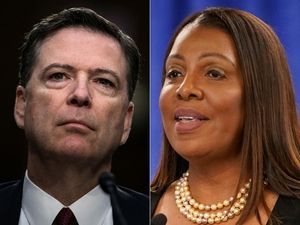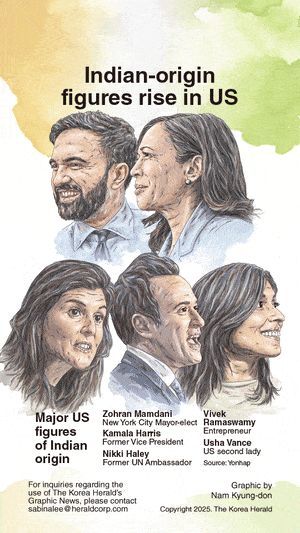![Chinese Vice Premier He Lifeng arrives at Rosenbad, ahead of the second day of trade talks between the U.S. and China in Stockholm, Sweden, Tuesday. Reuters-Yonhap]](https://contents-cdn.viewus.co.kr/image/2025/07/CP-2023-0309/31136445.jpg)
Li Chenggang, China’s international trade representative, reported that both sides engaged in “in-depth, candid, and constructive” discussions and agreed to explore extending the pause on tariffs beyond the August 12 deadline for a trade deal.
“Both sides fully recognize the critical importance of maintaining stable and healthy economic and trade relations between China and the United States,” Li stated, without providing specifics on how the extension might be implemented.
U.S. Treasury Secretary Scott Bessent characterized the talks as “very productive” over the two-day period with the Chinese delegation. He noted that they addressed U.S. concerns regarding China’s purchase of Iranian oil, its supply of dual-use technology to Russia that could be employed in warfare, and the overproduction of goods beyond global demand.
“We need to mitigate risks in certain strategic industries, such as rare earths, semiconductors, and medicines. We discussed potential collaboration to achieve a more balanced relationship,” Bessent explained.
He underscored that the U.S. aims to revitalize domestic manufacturing, secure purchase agreements for U.S. agricultural and energy products, and reduce trade deficits.
The latest round of negotiations kicked off on Monday in Stockholm with the goal of breaking the impasse over tariffs that have strained the crucial economic ties between the world’s two largest economies.
Prior meetings in Geneva and London addressed specific issues, including the triple-digit tariffs that effectively created a trade embargo, export controls on critical products, China’s dominance in rare earth magnets, and U.S. restrictions on semiconductors.
Monday’s closed-door discussions at Swedish Prime Minister Ulf Kristersson’s office lasted nearly five hours. Before talks resumed on Tuesday, Kristersson met with Bessent and U.S. Trade Representative Jamieson Greer over breakfast.
The Stockholm talks unfolded as President Donald Trump considers a potential meeting with Chinese President Xi Jinping—a summit that could be pivotal in cementing any major agreements between the two nations.
“I would say before the end of the year,” Trump told reporters aboard Air Force One on Tuesday.
On his Truth Social platform late Monday, Trump insisted he was not “seeking” a summit with Xi but might visit China at the Chinese leader’s invitation, “which has been extended.
Otherwise, no interest!” Bessent informed reporters that while the summit wasn’t discussed in Stockholm, they did address “the desire of both presidents for the trade and Treasury teams to engage in negotiations with our Chinese counterparts.” Greer mentioned that the American team would return to Washington to “consult with the president about” extending the August deadline and determine “whether that’s something he wants to pursue.”
The U.S. has struck tariff agreements with several key trading partners—including the United Kingdom, Japan, and the European Union—since Trump announced higher tariff rates against dozens of countries earlier in July. China remains perhaps the most significant challenge.
“The Chinese have demonstrated pragmatism,” Greer remarked in comments shared on social media by his office late Monday. “While tensions exist, our regular meetings to address these issues provide a solid foundation for negotiations.” Many analysts expected the Stockholm talks to result in an extension of the current tariff levels, which are considerably lower than the triple-digit rates proposed during the height of the U.S.-China tariff dispute in April, which briefly rattled global markets.
The two sides stepped back from the brink during bilateral talks in Geneva in May, agreeing to a 90-day pause—ending August 12—on those sky-high levels. Currently, U.S. tariffs stand at 30 percent on Chinese goods, while China imposes a 10 percent tariff on U.S. products.
Although China has offered few specifics about its objectives in the Stockholm talks, Bessent suggested that the situation has stabilized sufficiently for Beijing and Washington to begin working toward a longer-term economic balance.
Since China’s entry into the global trading system over two decades ago, Washington has urged Beijing to boost domestic consumption and provide greater market access to foreign goods, including those made in America.
Wendy Cutler, a former U.S. trade negotiator and current vice president at the Asia Society Policy Institute, noted that Trump’s team now faces challenges from “a large and confident partner that is more than willing to retaliate against U.S. interests.”
The rollover of tariff rates “should be the easy part,” she cautioned, warning that Beijing has learned from its experiences with the first Trump administration and “will not accept a one-sided deal this time.”
Bessent described the “overall tone of the meetings as very constructive,” while Li stated that both sides agreed in Stockholm to maintain close contact and “communicate promptly on trade and economic issues.” On Monday, police established a security zone along Stockholm’s expansive waterfront as curious onlookers sought glimpses of the high-ranking officials through a line of TV news cameras positioned behind metal barriers.
Flagpoles at the prime minister’s office proudly displayed both American and Chinese flags.









Most Commented